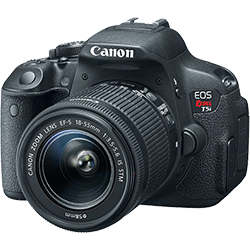The Visible Impressions Project
Photographic Images by Muiz Brinkerhoff
Go Beyond Snapshots, Learn to See More Deeply
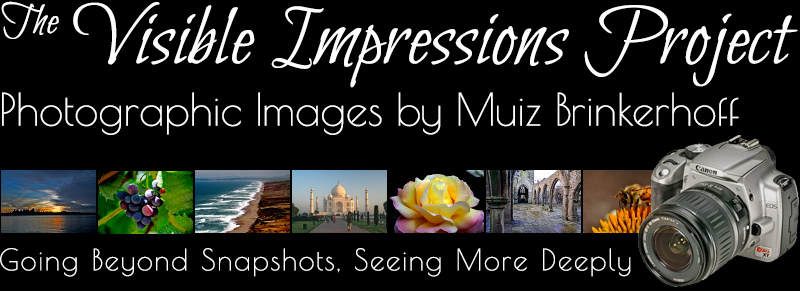
About
Definition
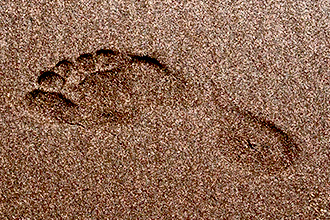
im·pres·sions
\im-'preshəns\
noun, plural
- indentations, lines, figures, or other marks produced in the surface of a medium by
Definition

im·pres·sions
\im-'pre-shəns\
noun, plural
- indentations, lines, figures, or other marks produced in the surface of a medium by pressure;
- representations of important or notable features of someone or something produced in an artistic medium;
- strong or memorable influences or effects of experience or perception produced in the feelings, or in the mind.
The Project

Several of my projects encompass different aspects of my ongoing exploration and journey with Light.
The Visible Impressions Project embodies
Read more
The Project

Several of my projects encompass different aspects of my ongoing exploration and journey with Light.
The Visible Impressions Project embodies some of the depth and breadth of my experience and enthusiasm for Photography, by making, displaying, and selling my own images in different formats, and by teaching others my perspective and process.
I chose the name Visible Impressions for the multiple layers of meaning inherent in the word impressions, and for the many reflections of those meanings that I feel and experience as a photographer and as a human being.
My hope in making my own artistic impressions visible to others via my photographs, is to catalyze some emotional, mental, and perhaps even inspired impressions within the viewer. These impressions can generate a variety of feelings and inner experiences, some of which might be:
- the pleasures of seeing familiar things, or places one has previously visited, that reconnect viewers with their own memories and impressions;
- the delight that arises from seeing the familiar from different and perhaps unexpected perspectives, leading to a different way of seeing ordinary things, and a broadening of perceptual horizons;
- the longing to travel to places one has always wanted to go, or perhaps never considered visiting;
- the recognition of a shared experience or viewpoint with the perspectives and sensibilities of the photographer;
- the impulse to discover one's own photographer's eye, and to increase one's artistic sensibilities, and technical skills.
My other hope is that my artwork will inspire your desire to buy some of my images, or to learn my process, resulting in a completed circle of mutual benefit.
Teaching My Process
![BW-Log End Sunburst 2aCrop [ photo: Log End Sunburst, Golden Gate Park, San Francisco, California, USA, circa 1995 (img BW-SF Golden Gate Park Log End Sunburst 2a crop) ]](../gallery/bw/thumbs/BW-SFGoldenGateParkLogEndSunburst2acrop-thumb.jpg)
The teaching component of the Project focuses on learning and practicing (or improving) several sets of basic skills from two areas:
- the mechanics
Teaching My Process
![BW-Log End Sunburst 2aCrop [ photo: Log End Sunburst, Golden Gate Park, San Francisco, California, USA, circa 1995 (img BW-SF Golden Gate Park Log End Sunburst 2a crop) ]](../gallery/bw/thumbs/BW-SFGoldenGateParkLogEndSunburst2acrop-thumb.jpg)
The teaching component of the Visible Impressions Project focuses on learning, practicing, and improving several sets of basic skills from these two areas:
- the mechanics and techniques of digital photography, including using Lightroom™ for image cataloging, keywording, and organization; and Photoshop™, Topaz Denoise AI ™ and Sharpen AI ™ for post-processing adjustments;
- the development of an embodied, artistic sensibility that understands the impact that visual impressions can have on our internal and external experience.
Elements of the artistic sensibility skills set include:
- image composition and visual perspective
- interactions of light and shadow
- viewpoint and mood
- intention, creativity, and inspiration
- awakening to seeing as well as merely looking
Elements of the technical and digital skills set include:
- basic camera skills to produce high quality digital images
- shooting in Raw rather than JPG mode, if your camera supports it
- using a polarizing filter
- focusing and depth of field issues
- benefits of using a tripod
- principals of good image composition
- and so on.
- the crucial importance of calibrating computer screen display colors
- basic Photoshop™ skills to adjust or correct:
- tilted, keystoned, overly busy, or unbalanced compositions
- exposure, brightness and contrast
- highlights and shadows
- saturation, clarity, and sharpness
- plus soft proofing image colors against a printer's particular ICC color profile, to avoid color shift during printing
- scanning film negatives and prints into quality digital images
This Project isn't a full-time gig for me, but it's much more than a hobby. I know from experience that my current set of technical skills and artistic sensibilities are producing photographic images that engage others. At the same time, I also know that I haven't mastered all the levels and layers of subtlety and technique for working with Light and Shadow which allow many full-time, professional photographers to produce their award-winning images.
I feel this is a good thing rather than a lack or a detriment for me personally, as it keeps the space open for me to continue learning and growing, and to take inspiration from the work of other photographers. My own process and the teaching of it can only benefit from those inspirations.
At the same time, I feel that my inner approach and process make me more than an amateur or hobby photographer — in much the same way as they also make me more than an ordinary tourist when I travel around the world.
Whatever the appropriate adjective for where I fit into the experience spectrum from beginner to master, I'm confident that I can teach others the basic photographic skills and techniques that I've been using to produce better images. I can also teach a variety of methods and exercises that will support learning how to see as well as to look, and to begin the awakening of the inner, artistic and photographer's eye.
For those who feel drawn to work with me, the combination of these outer and inner skills, fertilized by a sufficient amount of patience, practice and experimentation, can help you make the transition from taking mere snapshots to creating your own Photograph Art. The images which result from learning my process will reflect your own particular view of yourself, of the world, and of Life — your own visible impressions.
Some quotes that I resonate with:
Leica, Schmeika, the camera doesn't make a bit of difference. All of them record what you are seeing. But you have to see.
—
Ernst Haas
(1921-1986) Austrian-American photojournalist and color photographer, who bridged the gap between photojournalism and photography as a medium for expression and creativity.
Always seeing something, never seeing nothing, being photographer.
—
Walter De Mulder
(1933 - ) Groundbreaking Flemish photojournalist, still taking pictures at age 80
You don't make a photograph with just a camera. You bring to the act of photography all the pictures you have seen, the books you have read, the music you have heard, the people you have loved.
—
Ansel Adams
(1902 - 1984) Legendary USA Black & White photographer
When people look at my pictures I want them to feel the way they do when they want to read a line of a poem twice.
—
Robert Frank
(1924 - ) Swiss born, USA black and white photographer,
Don't shoot what it looks like. Shoot what it feels like.
—
David Alan Harvey
(1944 - ) San Francisco born USA photographer)
What we see depends mainly on what we look for.
— Sir John Lubbock (1834-1913)
English biologist and politician
Everything has beauty, but not everyone sees it.
— Confucius (551 - 479 BCE)
Chinese philosopher, teacher, politician
While there is perhaps a province in which the photograph can tell us nothing more than what we see with our own eye, there is another in which it proves to us how little our eyes permit us to see.
—
Dorothea Lange
(1895 - 1965)
Influential USA photographer, best known for her
Depression-era work for the Farm Security Agency)
From Snapshots to Art
I began taking my own photographic images, with my own cameras, some 50 years ago, and over that time, as one would expect, my photographic and artistic sensibilities and skills have evolved, in both depth and breadth.
But even in the period before, when I was a
spectator looking at
Read more
From Snapshots to Art
I began taking my own photographic images, with my own cameras, some 50 years ago, and over that time, as one would expect, my photographic and artistic sensibilities and skills have evolved, in both depth and breadth.
Even early on, when I was a still a spectator looking at images created by others, I was already beginning to make a distinction between snapshots and photographs. At the time I didn't understand it clearly and wouldn't have used those two words to articulate the difference, but I had a growing awareness that some snapshots looked or felt a lot better than others.
The medium is the same in both cases, of course, but for what I now refer to as photographic art the skill and execution, and even more importantly the artistic intent and the follow-through, are quite different.
I began taking snapshots with my own camera in the late 1960s when I was at university, and photographs that I've been enlarging and framing from the early ‘90s, when I decided to try my own hand at black and white photography, and to do my own developing and printing. The catalyst for that decision was a feeling I had in viewing a Black and White exhibit at the San Francisco Museum of Modern Art (MOMA). It's been so long ago that I have no idea who the photographer-artist was, nor the name of the exhibit, but I was left with two very strong impressions. One was that I didn't care for the images very much. They were big enlargements of somewhat dark, moody and to my taste grim, images from city street scenes, that were extremely grainy and looked to me to be a bit out of focus. The other impression that arose strongly as I walked around the exhibit was 'Wow! I'm sure I can make better images than these!'
I know now that 'dark, grainy, and moody' is a particular look and feel that some artists intend, and that 'soft focus' might be a more accurate description than 'out of focus'. I also realize that the photographic style that was most awakened in me at the time was very Photorealistic, rather than Impressionist or Abstract. And it's likely that I judged the work in that exhibit too harshly, from within my own narrow ideas about what 'good' photographs looked like. I think it would be interesting if I could revisit that artist's work to see how I feel about it now, as my horizons have expanded so much since then. I still produce mostly Photorealistic images, but I've begun to experiment with more Impressionist and Abstract captures.
Acting on the impression that I could do better, I did some reading and studying about Black and White photgraphy in general and shadows and highlights in particular. Then I bought some rolls of BW film, and spent several hours on a Saturday and a Sunday, experimenting with different exposure settings for the same compostion, shooting from different angles, and playing with light and shadow.
After seeing how all of my artistic efforts to capture shadow detail and highlights, and different moods (but with sharp focus and no graininess) were completely undone by having the rolls of film developed and printed by one of the better One-Hour, bulk processing shops, I realized that I would either have to begin paying for professional custom processing, or learn how to do my own black and white developing and my own printing.
I chose the more creative, and in the short term less expensive route and assumed complete control of the whole process. I rented time, in blocks of 10 hours each, at a darkroom in the basement of a small, store-front photo studio, in San Francisco, on Polk Street, below Russian Hill. This gave me access to all of the darkroom equipment and chemicals in the basement of the studio, as well as to the experience of the photographers on duty, while I learned how to develop negatives and make prints. Once I felt confident with the process, I bought a used enlarger and all of the other equipment and supplies to set up my own black and white darkroom in the laundry room of the house I was renting. I even designed and built a removable light barrier for the window in the room, that blocked out all light while still letting in fresh air from the opened window behind it.
With the technical experience I gained from my own developing and printing, I finally made the transition from passive, mediocre snapshot taker to active, budding photographer-artist. That shift which had been gestating over the previous ten years, finally opened the door to the possibility of making photographic art.
In 1998 I let go of doing my own black and white processing and printing, never unpacking my darkroom equipment after I left San Francisco and moved north to Sonoma County. And in 2005, I stopped shooting on film altogether, when I bought my first digital SLR (Single Lens Reflex) camera, the Canon EOS Rebel XT.<>
The various skills I learned during that film period formed the photographic foundation that allowed me to step fairly confidently into my digital period. And of course the learning continues.
Cameras & Film
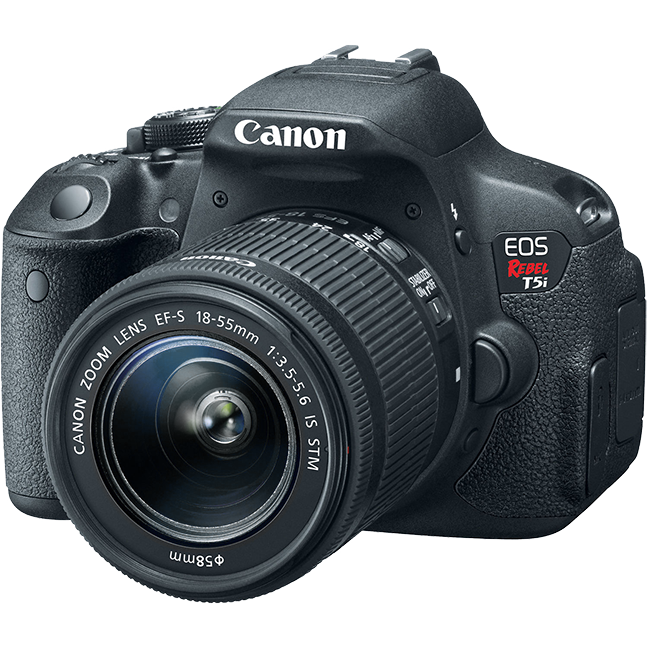
I used several different cameras to capture the images displayed here at this website. Those dated between 1993 and
Read more
Cameras & Film
I used several different cameras to capture the images displayed at this website. Those dated between 1993 and November 2005 were taken with an Olympus IS-3, 35mm, SLR, film camera. The 35mm negatives were scanned to produce the digital copies of the images seen here.
Most of the color film images here were shot on Kodak 35mm, color negative film (Gold 200, GC 400, or GT 800), and a lot of my earlier color film work, still waiting to be scanned, was shot on Fujicolor 200, 400, and 800.
The black and white images were shot using Kodak TMax 100, which I then developed and printed myself.
From December 2014 to the present, I've used a Canon EOS Rebel T5i Digital SLR (also known as the 700D), with an 18 Megapixel, 1.6x crop, APS-C sensor (22.3 x 14.9 mm) that produces 5184x3456 pixel images.
From December 2005 to November 2014, my previous digital SLR camera was a Canon EOS Rebel XT (the 350D), with an 8 Megapixel, 1.6x crop sensor that produces 3456x2304 pixel images.
From 1978 to 1993, I was using an old Minolta 35mm SLR, which a friend gave me in lieu of paying off the last of a small loan. Unfortunately I don't remember the model, but after looking at photos of old Minoltas on the web, the "SRT 101" looks familiar, so it's possible that's the model I used.
Negatives from this early period have yet to be scanned, like most of those from the Olympus IS-3 years ... another of several "works in progress", so stay tuned, but don't hold your
breath. 
Digital Processing
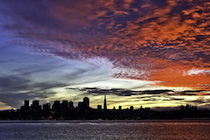
For the digitized images, both those scanned from film negatives, as well as those produced with my digital camera, I normally do a standard series of post processing steps in Photoshop™.
Read more
Digital Processing
For digitized images, both scanned from film negatives, and produced with my digital cameras, I normally consider doing a standard series of post processing steps, depending first on the look and feel I want for the finished image — crisp, sharp, clear, photo-realistic; or soft focus, dreamy, moody, emotionally evocative, impressionistic; or gritty, grainy; or abstract; and so on.
Then I'll focus in on possibly making adjustments to white balance, shadows and highlights, levels, exposure, saturation, vibrance, brightness, and contrast — either on the image as a whole, or on specific segments of the image using "masks" in separate layers, to isolate the particular segment so that the adjustment gets applied just to that area.
(Drag the white slider back and forth, to see the image before and after processing)
.jpg)
.jpg)
.jpg)
.jpg)
.jpg)
.jpg)
In film negative print processing these same sorts of steps are done by manipulating exposure times, and by dodging and burning. But they're all so much easier to do digitally.
And in some cases, I might experiment with different treatments for the same image, to see which results in a better image. This is definitely where skill with digital technology collaborates with artistic creativity.
To begin with, I may crop an image where necessary to improve the composition, or to produce a close-up of the subject, as well as possibly leveling the horizon line for a tilted image, or repairing a keystoned perspective (buildings and other tall objects looking like they're leaning backwards).
Then, and only as needed, I adjust the digital values for white balance and light color temperature (in raw format images); and values for exposure; white, black, and mid-tone levels; shadows and highlights; color saturation; brightness; and contrast.
The purpose of these adjustments and corrections is to bring the photographic image closer to how it looked to my eye, and/or to enhance one or more aspects in order to produce the particular appearance, impression, or mood that I'm looking for in the final print.
Selling My Images
![Reflections in a Dew Drop, Santa Rosa, California, USA, September 2007 (img 143-014) [ photo: Reflections in a Dew Drop, Santa Rosa, California, USA, September 2007 (img 143-014) ]](../gallery/flowers/thumbs/143-014ReflectionsInADewDrop-thumb.jpg)
In addition to teaching others my process, I'm also interested in marketing my photos — the visible
impressions of my own Journey with Light — in a variety of ways, for a variety of purposes:
Read more
Selling My Images
![Reflections in a Dew Drop, Santa Rosa, California, USA, September 2007 (img 143-014) [ photo: Reflections in a Dew Drop, Santa Rosa, California, USA, September 2007 (img 143-014) ]](../gallery/flowers/thumbs/143-014ReflectionsInADewDrop-thumb.jpg)
In addition to teaching others my process, I'm also interested in marketing my photos — the visible impressions of my own Journey with Light — in a variety of ways, for a variety of purposes:
- Photo prints of various sizes mounted in acid free single mat, with single mat backing board, and acid and lignin free, archival, clear, protective bag
- (NOTE: Prices do not include California Sales Tax, packaging, shipping, and insurance)
- 8x10 inch prints
- mounted in 11x14 inch single mat
- $60
- 11x14 inch prints
- mounted in 16x20 inch single mat
- $85
- 16x20 inch prints
- mounted in 20x24 inch single mat
- $110
- 20x30 inch prints
- mounted in 24x36 inch single mat
- $145
- 8x10 inch prints
- Greeting Cards
Blank inside, with envelope, in a clear, archival, acid and lignin free, protective sleeve. They're commercially printed (4-color CMYK process) on 100% recycled, 110 lb. cover stock. Copyright notices seen across the images are not present on the printed cards.- Single cards $4.00 each
- 3-5 of the same image $3.50 each
- 6+ of the same image, $3.00 each
- + California sales tax, shipping, and insurance
- Licensed Image Usage
high resolution image downloads, for use as full or cropped photos, or as modified foreground or background illustrations, banners, or graphics, for:- Print Media
- book covers and books
- brochures
- flyers and posters
- branding and identity
- other print media
- Digital Media
- websites
- blogs
- email blasts
- e-books and interactive PDFs
- Print Media
If you have a need, or an idea, that I haven't listed — let's chat about it.
Please Email me for more details about 1-on-1 training sessions, or purchasing/licensing my images.
